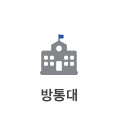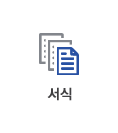목차
1. How to Lie with Maps
2. Phototruth or Photofiction?
2. Phototruth or Photofiction?
본문내용
각각의 새로운 그래픽 소프트웨어 프로그램의 도래가, 이미지를 조작하는 것을 더욱 더 광범위하고 유혹적으로 만들어온 것처럼 보인다. (That이 주어인데, 너무 길어서 가주어 it을 사용함)
2. One result is that \"the objective \'truth\' of photographs has become something of a quaint quaint = 기묘한, 이상한
concept\"
=> 한 가지 결과는 “사진들의 객관적인 ‘진실’이 이상한 개념의 어떤 것이 되었다는 것”이다.
3. Michael Morse of the National Press Photographers Association agrees : \"People have no idea how much alteration is going on.\"
=> 출판사진가연합의 Michael Morse가 동의한다 : “사람들은 그런 변화가 얼마나 많이 진행중인지 모른다.”
4. This raises thorny thorny = 가시가 돋은 날카로운,, 곤란한
ethical challenges for professionals, educators, and students alike.
=> 이것은 전문가들, 교육자들, 학생들과 같은 사람들에게 날카로운 윤리적 도전을 일으킨다.
< Paragraph 6 >
1. For decades, photojournalists and editors have opposed misleading alterations, particularly in \"hard news\" photos (images of war, crime scenes, political events, natural disasters, etc.)
=> 몇 십년동안, 사진 저널리스트과 편집자들은, 특히 “곤란한 뉴스” 사진의 잘못된 변화를 반대해왔다. (전쟁 사진, 범죄 장면, 정치적 사건, 자연 재해, 등등.)
2. As computer manipulations have become more common, however, adherence adherence = 고수, (뒤에 to와 같이 쓰면) 집착
to photojournalistic norms has given way to the temptations of commerce, even in respected newspapers and news magazines.
=> 그러나, 컴퓨터 조작이 더욱 더 보편화되면서, 사진 저널리즘적 규범에 대한 집착이 상업적인 조작에 길을 터주게 되었다, 특히 존경받는 신문과 뉴스 잡지들에게서.
< Paragraph 7 >
1. For example, during the processing of National Geographic\'s Febrary 1982 photo of the Great Pyramids of Gize, a pyramid was digitally shifted to make the image fit the cover.
=> 예를 들어, National Geographic사의 1982년 2월 호의 Gize의 대 피라미드라는 사진의 처리과정 동안, 피라미드는 디지털적으로 표지에 맞게 이동되었다.
2. The alteration provoked provoke = 일으키다, 일으키게 하다, 성나게 하다
much controversy, not so much because it was drastic (it was relatively insignificant) but because it appeared in a magazine long respected for its authenticity authenticity = 확실성, 신빙성
.
=> 그 변화는 많은 논쟁을 일으켰다, 그것이 끔찍했기 때문은 그렇게 많은 이유가 아니었다 (그것은 상대적으로 의미가 없었다), 다만 그것은 잡지에서 그것의 신빙성에 대해 오랫동안 존중받았기 때문이다.
< Paragraph 8 >
1. In 1998, National Geographic editor Bill Allen said, \"Nearly two decades ago we moved one pyramid to get the same effect as if as if = 마치 ~인것처럼
the photographer had walked perhaps fifty yards to the left before taking the photograph.
=> 1998년에, National Geographic의 편집자 Bil Allen이 말했다. “거의 20년 전에, 우리는 한 피라미드를 사진사가 사진을 찍기 전에 50야드 정도 걸은 것과 같은 효과를 얻기 위해 옮겼습니다.”
2. \"And yet after all that time, one of the most common questions I\'m asked is, \'Do you guys still move pyramids?\'\"
=> “그리고 시간이 지나고, 내가 받은 가장 일반적인 질문들 중의 하나는 ‘당신들은 아직도 피라미드들을 움직이나요?’ 였죠.”
3. \"This reminds all of us of just how fragile our credibility is.\"
=> “이것은 우리들 모두에게 우리의 신뢰성이 얼마나 깨지기 쉬운지를 상기시켜줍니다.”
4. \"If you lose it, it\'s almost impossible to ever get it back.\"
=> “당신이 그것(신뢰성)을 잃으면, 그걸 다시 되찾기는 거의 불가능하죠.”
5. \"It\'s why we\'re such fanatics fanatic = 열광하는 사람, 광신하는 사람.
about disclosure disclosure = 발각, 폭로, 발표, 숨김없이 털어놓은 이야기
now at National Geographic.\"
=> “그것이 우리가 지금 National Geographic에서 그런 폭로에 대한 광신자들이 된 이유죠.” (- 앞에서 그런 조롱섞인 질문을 많이 받은 결과, National Geographic에서 존재하는 조작된 사진들에 대한 폭로를 많이 하게
2. One result is that \"the objective \'truth\' of photographs has become something of a quaint quaint = 기묘한, 이상한
concept\"
=> 한 가지 결과는 “사진들의 객관적인 ‘진실’이 이상한 개념의 어떤 것이 되었다는 것”이다.
3. Michael Morse of the National Press Photographers Association agrees : \"People have no idea how much alteration is going on.\"
=> 출판사진가연합의 Michael Morse가 동의한다 : “사람들은 그런 변화가 얼마나 많이 진행중인지 모른다.”
4. This raises thorny thorny = 가시가 돋은 날카로운,, 곤란한
ethical challenges for professionals, educators, and students alike.
=> 이것은 전문가들, 교육자들, 학생들과 같은 사람들에게 날카로운 윤리적 도전을 일으킨다.
< Paragraph 6 >
1. For decades, photojournalists and editors have opposed misleading alterations, particularly in \"hard news\" photos (images of war, crime scenes, political events, natural disasters, etc.)
=> 몇 십년동안, 사진 저널리스트과 편집자들은, 특히 “곤란한 뉴스” 사진의 잘못된 변화를 반대해왔다. (전쟁 사진, 범죄 장면, 정치적 사건, 자연 재해, 등등.)
2. As computer manipulations have become more common, however, adherence adherence = 고수, (뒤에 to와 같이 쓰면) 집착
to photojournalistic norms has given way to the temptations of commerce, even in respected newspapers and news magazines.
=> 그러나, 컴퓨터 조작이 더욱 더 보편화되면서, 사진 저널리즘적 규범에 대한 집착이 상업적인 조작에 길을 터주게 되었다, 특히 존경받는 신문과 뉴스 잡지들에게서.
< Paragraph 7 >
1. For example, during the processing of National Geographic\'s Febrary 1982 photo of the Great Pyramids of Gize, a pyramid was digitally shifted to make the image fit the cover.
=> 예를 들어, National Geographic사의 1982년 2월 호의 Gize의 대 피라미드라는 사진의 처리과정 동안, 피라미드는 디지털적으로 표지에 맞게 이동되었다.
2. The alteration provoked provoke = 일으키다, 일으키게 하다, 성나게 하다
much controversy, not so much because it was drastic (it was relatively insignificant) but because it appeared in a magazine long respected for its authenticity authenticity = 확실성, 신빙성
.
=> 그 변화는 많은 논쟁을 일으켰다, 그것이 끔찍했기 때문은 그렇게 많은 이유가 아니었다 (그것은 상대적으로 의미가 없었다), 다만 그것은 잡지에서 그것의 신빙성에 대해 오랫동안 존중받았기 때문이다.
< Paragraph 8 >
1. In 1998, National Geographic editor Bill Allen said, \"Nearly two decades ago we moved one pyramid to get the same effect as if as if = 마치 ~인것처럼
the photographer had walked perhaps fifty yards to the left before taking the photograph.
=> 1998년에, National Geographic의 편집자 Bil Allen이 말했다. “거의 20년 전에, 우리는 한 피라미드를 사진사가 사진을 찍기 전에 50야드 정도 걸은 것과 같은 효과를 얻기 위해 옮겼습니다.”
2. \"And yet after all that time, one of the most common questions I\'m asked is, \'Do you guys still move pyramids?\'\"
=> “그리고 시간이 지나고, 내가 받은 가장 일반적인 질문들 중의 하나는 ‘당신들은 아직도 피라미드들을 움직이나요?’ 였죠.”
3. \"This reminds all of us of just how fragile our credibility is.\"
=> “이것은 우리들 모두에게 우리의 신뢰성이 얼마나 깨지기 쉬운지를 상기시켜줍니다.”
4. \"If you lose it, it\'s almost impossible to ever get it back.\"
=> “당신이 그것(신뢰성)을 잃으면, 그걸 다시 되찾기는 거의 불가능하죠.”
5. \"It\'s why we\'re such fanatics fanatic = 열광하는 사람, 광신하는 사람.
about disclosure disclosure = 발각, 폭로, 발표, 숨김없이 털어놓은 이야기
now at National Geographic.\"
=> “그것이 우리가 지금 National Geographic에서 그런 폭로에 대한 광신자들이 된 이유죠.” (- 앞에서 그런 조롱섞인 질문을 많이 받은 결과, National Geographic에서 존재하는 조작된 사진들에 대한 폭로를 많이 하게


































소개글